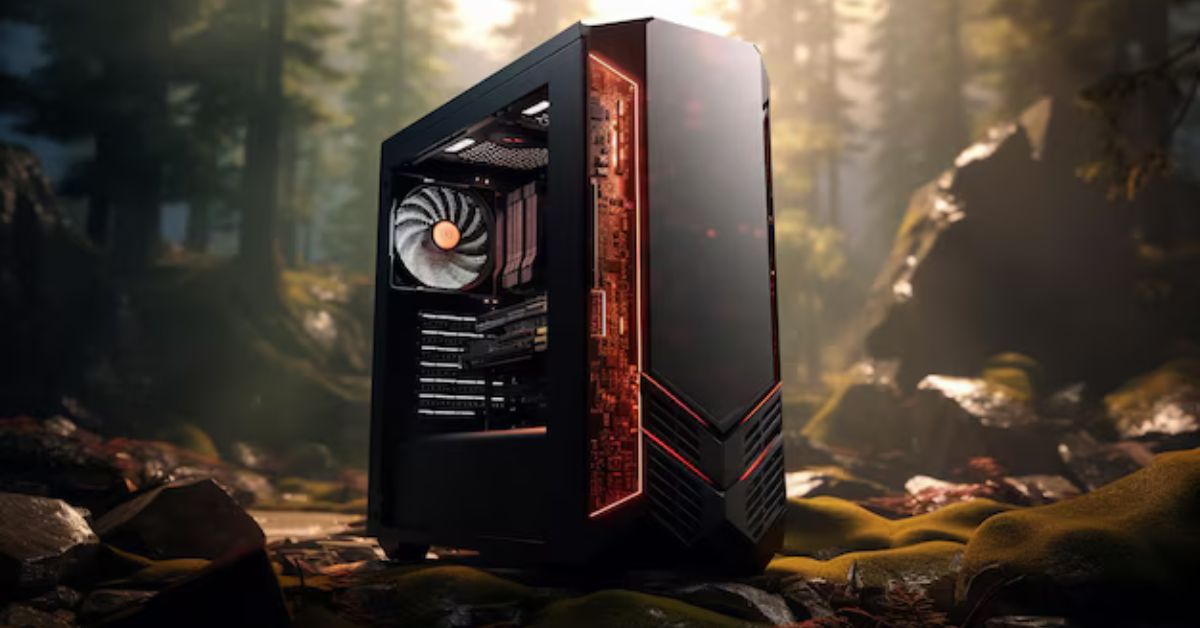When building a custom PC, selecting the right case is one of the most important decisions you’ll make. The PC case is more than just a shell to hold your components; it affects airflow, cooling, noise levels, and even the overall aesthetics of your build. In this comprehensive guide, we’ll explore the different types of PC cases, their key features, and how to choose the best one for your needs.
What is a PC Case?
A PC case, also known as a chassis, is the enclosure that houses all the key components of your computer. This includes the motherboard, power supply, hard drives, cooling systems, and graphics cards. While it might seem like a simple part of your build, the PC case plays a significant role in the performance and longevity of your system.
The right case not only protects your components from dust and physical damage but also provides efficient cooling and a tidy, organized space for cables. Moreover, cases come in a variety of designs and sizes, allowing users to customize their setup according to personal preference and hardware requirements.
Types of PC Cases
PC cases come in several different sizes and form factors, each designed to meet specific needs and preferences. Here are the most common types:
Full-Tower Cases
Full-tower cases are the largest type of PC cases, providing ample space for high-performance builds. They can accommodate Extended ATX (E-ATX) motherboards, multiple graphics cards, and robust cooling solutions like liquid cooling systems. Full-tower cases are ideal for those looking to build high-end gaming PCs or workstations that require extensive customization.
Advantages of full-tower cases include more room for airflow and better cable management options. However, they are bulky, making them less suitable for smaller spaces or those who prefer compact systems.
Mid-Tower Cases
Mid-tower cases are the most popular and widely used form factor. They strike a balance between size and functionality, offering enough room for ATX motherboards, multiple GPUs, and adequate cooling solutions. Mid-towers are versatile, making them an excellent choice for gaming PCs, home workstations, and general-purpose computers.
Most mid-tower cases support a variety of cooling options, including air and liquid cooling, and provide sufficient space for cable management. They are also more compact than full towers, making them easier to fit under desks or in tighter spaces.
Mini-Tower Cases
Mini-tower cases are designed for smaller Micro-ATX and Mini-ITX builds. These cases are compact and space-efficient, making them ideal for those who need a smaller system, such as a home theater PC (HTPC) or a compact gaming rig. However, their reduced size comes at the cost of less space for expansion, fewer cooling options, and limited support for high-end hardware.
If you’re building a PC with minimal components or prioritizing portability, a mini-tower case could be the best option. Just keep in mind that larger GPUs and complex cooling solutions may not fit.
Small Form Factor (SFF) Cases
For those looking for a truly compact build, small form factor (SFF) cases are the way to go. These cases are designed to house Mini-ITX motherboards and offer an incredibly compact footprint. SFF cases are ideal for users who want a portable system or a minimalistic desktop setup.
However, the compact size of SFF cases limits their cooling options and internal space, so they often require careful planning to ensure compatibility with components like the power supply, CPU cooler, and graphics card. Nonetheless, with the right parts, SFF builds can be powerful and sleek.
Key Features to Consider in a PC Case
When choosing a PC case, it’s important to consider a range of factors that can affect performance, ease of use, and aesthetics. Here are some of the key features to look for:
Cooling Support and Airflow
Effective cooling is essential for maintaining the performance and longevity of your PC components. A good PC case should provide ample ventilation and cooling options to keep your system from overheating.
Look for cases with multiple fan mounts, mesh panels, and ventilation grills that allow air to circulate freely. Many cases come with pre-installed fans, but you may also want to add additional fans or upgrade to higher-performance ones.
For enthusiasts who prefer liquid cooling, ensure the case has radiator support. Many modern cases come with dedicated spaces for radiators, typically ranging from 120mm to 360mm. Check the case’s specifications to make sure it can accommodate your chosen cooling setup.
Cable Management
A tidy build not only looks better but also improves airflow and makes maintenance easier. Good cable management features, such as routing holes, cable ties, and hidden compartments, can help you keep your build organized and clutter-free. Look for cases with ample clearance behind the motherboard tray to hide cables and keep them out of sight.
Expandability and Drive Bays
Consider how many hard drives or SSDs you’ll be installing, as well as any potential for future upgrades. PC cases typically come with a variety of drive bays for 2.5-inch SSDs and 3.5-inch HDDs. If you plan to store a lot of data or run multiple drives in a RAID configuration, make sure your case has enough drive bays to accommodate your needs.
Additionally, think about expansion slots for PCIe devices, such as sound cards, network adapters, or additional GPUs. Full-tower and mid-tower cases usually offer more expansion slots, giving you room to grow.
Build Quality and Materials
The build quality of a PC case can significantly impact both its longevity and ease of use. Most cases are made from steel, aluminum, or plastic, with higher-end cases featuring premium materials like tempered glass or brushed aluminum.
Steel cases are sturdy and durable, while aluminum cases tend to be lighter and more stylish. Tempered glass panels, often used for side windows, allow users to showcase their builds while adding a touch of elegance. However, cases with glass panels may be more fragile and require extra care when handling.
Front Panel Connectivity
The front panel of a PC case is where you’ll find ports for connecting peripherals and other devices. Look for a case with USB 3.0 or USB Type-C ports, audio jacks, and possibly even card readers for quick access. Some cases also include controls for fan speed or RGB lighting, giving you more control over your system.
Aesthetics and RGB Lighting
Aesthetics play a big role for many PC builders, especially those who want their rig to stand out. Some cases come with built-in RGB lighting, while others feature transparent side panels to showcase your components. If you care about the look of your build, choose a case that matches your aesthetic preferences, whether that’s a minimalist design or something more flashy.
RGB lighting has become increasingly popular in recent years, with many cases offering customizable light strips or pre-installed RGB fans. If you’re into lighting effects, make sure the case is RGB-compatible and has the necessary mounts for installing additional lighting components.
How to Choose the Right PC Case for Your Build
Now that you’re familiar with the types of PC cases and their features, the next step is selecting the right one for your build. Here’s a quick checklist to help you make the best decision:
- Determine Your Build’s Purpose: Are you building a gaming PC, workstation, or home theater system? Different builds have different requirements, so choose a case that fits your needs.
- Check Compatibility: Ensure the case is compatible with your motherboard form factor (ATX, Micro-ATX, Mini-ITX) and can accommodate your CPU cooler, graphics card, and power supply.
- Consider Cooling Needs: If you’re using high-performance components, make sure the case provides adequate airflow or has space for liquid cooling solutions.
- Plan for Future Upgrades: Choose a case that offers room for expansion, whether that’s adding more drives, upgrading the GPU, or installing extra fans.
- Think About Aesthetics: If the appearance of your build is important, look for a case with tempered glass panels, RGB lighting, or a sleek design that fits your style.
- Budget: While it’s tempting to go for the most stylish case with all the bells and whistles, make sure it fits within your budget. There are plenty of affordable cases that offer great features without breaking the bank.
Conclusion
A PC case is much more than just an enclosure for your components—it plays a vital role in the functionality, aesthetics, and longevity of your build. Whether you’re building a high-end gaming rig or a compact home theater PC, choosing the right case is essential for ensuring proper airflow, sufficient space for upgrades, and a sleek, organized appearance.
By understanding the different types of cases and key features to consider, you can make an informed decision and find a case that meets your needs, both now and in the future. Happy building!










